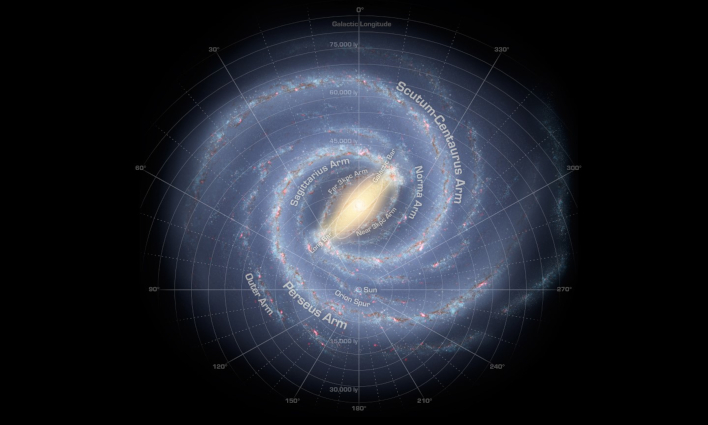Why Astronomers Are Probing The Poor Old Heart Of Our 13 Billion Year Old Milky Way

"But our results significantly flesh out the existing picture by showing that there is indeed a tightly bound in situ 'iceberg,' whose tips have been recognised before," declared the team's lead astronomer Hans-Walter Rix of the Max Planck Institute for Astronomy.
The group of scientists employed the use of the European Space Agency's (ESA) Gaia laboratory, which has been orbiting our Sun for years. Scientists used Gaia's measurements to estimate the stars' metallicity, which in turn revealed when they were formed.

On-sky logarithmic density distribution of stars in sample for metal-rich (left panel) and metal-poor (middle panel) selections.
Following the Big Bang 13.8 billion years ago, the primordial universe was mainly hydrogen, with a bit of helium. Once the stars began forming, their hot dense cores began smashing atoms together to form heavier elements, such as hydrogen into helium, helium into carbon, and so on.
The later a star was born in the Universe, the more metal it is likely to contain—the higher the metallicity, the younger a star is. "Metal-poor" stars are believed to be older. Once a group of stars is found with similar metal content, on a similar orbital path, it is reasonable to assume that this group of stars has been together for a very long time.
The particular bundle of stars the team discovered is said to be 12.5 billion years old. Rix called them the "poor old heart" of the Milky Way, because they are metal-poor, extremely old, and can be found in the heart of the galaxy. These bundles of stars formed in the early Universe were not completely developed galaxies, but their seeds.
The new discovery brings about a plethora of new questions, such as what is the spatial distribution of these stars? What can their distribution tell us about the collision history of our very own Milky Way? And perhaps the more intriguing question of whether or not it can lead scientists and astronomers to the much dimmer and more difficult-to-find proto-galaxies that came together in the earliest formation stages of our galaxy.
Top Image Credit: NASA

